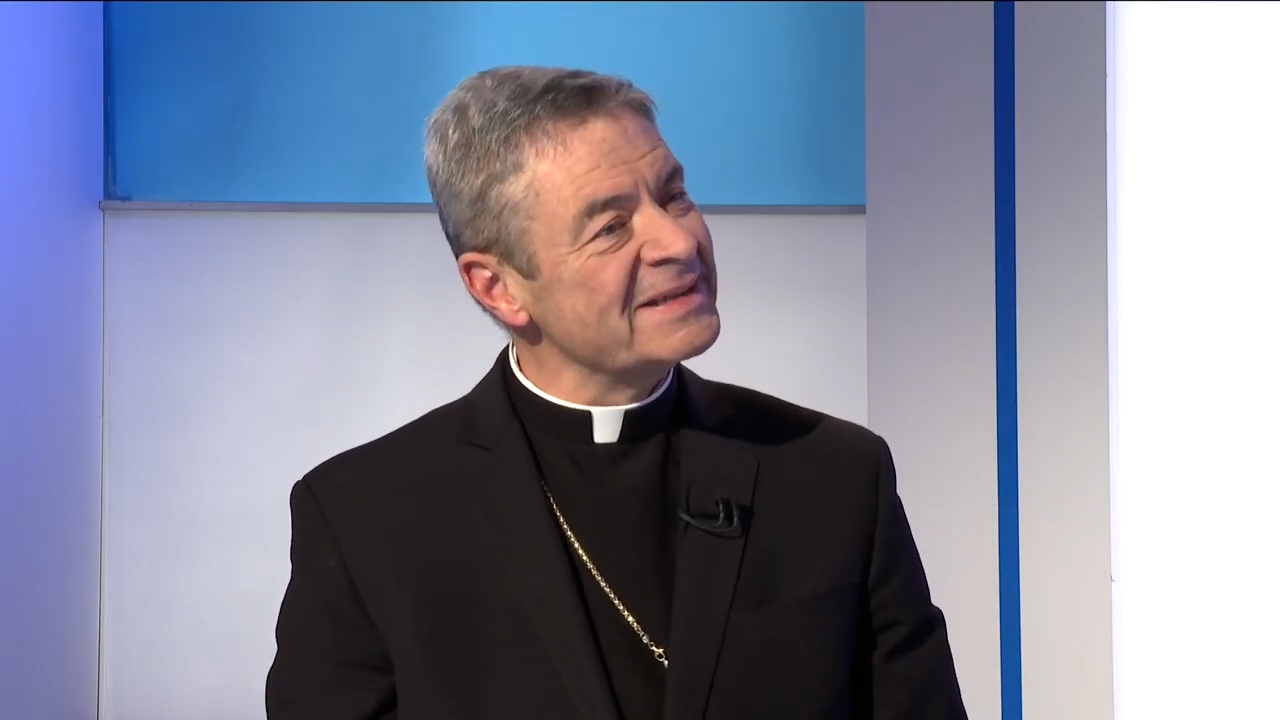DYKER HEIGHTS — As the faithful in the Diocese of Brooklyn absorbed the news that the number of people attending Mass has decreased in recent years, pastors got busy planning for the future.
In his letter to the faithful last month, Bishop Robert Brennan wrote that parishes all over the diocese will be adjusting their Mass schedules, even eliminating some Masses to reflect the changes in the Mass-going population.
Some pastors aren’t waiting to act.
Father Robert Adamo, pastor of St. Ephrem Church in Dyker Heights, took a long look at his attendance numbers and made adjustments to the Mass schedule that started on July 1.
In consultation with the parish pastoral council and the parish trustees, he combined two Masses — at 10 a.m. and 12 noon — into one Mass at 11 a.m. and eliminated the 5 p.m. Sunday evening Mass.
“I prepared the parishioners beforehand so they would know what was coming and would understand why it was being done,” Father Adamo said, explaining that he printed a breakdown of attendance figures for each Mass in the church bulletin.
“I did that, rather than print the total number for all of the Masses together, because if you see that hundreds of people are coming to church over the course of a weekend, it looks impressive. But when you break it down and you see that one of the Masses has only 35 people, it’s different,” he said.
St. Sebastian Church in Woodside is also adjusting its Mass schedule. Starting after the New Year, the 8 a.m. Mass and 9 a.m. Mass will be combined into one Mass at 8:30 a.m.
“I’m happy with the numbers of people coming to Mass,” said Father Patrick West, the pastor. “We have about 3,000 people coming to Masses on weekends. But the bishop wants us to consider the size of the church and not just the number of people. We have a large church. We can fit 1,500 people in here.”
Many churches took the letter as an opportunity to take stock.
Father Peter Purpura, pastor of Our Lady of Hope Church in Middle Village, isn’t planning any major changes in his Mass schedule but said that when he discussed the letter with his parish pastoral council, the members decided to take action.
As a result, Our Lady of Hope will be holding a parish wide assembly, tentatively set for March 11, to get feedback from parishioners on the parish’s future. “The council members want to be proactive,” Father Purpura explained.
Msgr. Joseph Grimaldi, vicar general for the diocese, said there is no exact timetable on when changes to Mass schedules can be expected. The idea, he said, is to have pastors and parishioners start thinking about different ways to make use of parish resources so that they can better serve the faithful.
“The fact is we have to coordinate better our human and our financial resources, especially when it comes to clergy,” he said.
The need for change does not come down to a matter of how much money a church has, Msgr Grimaldi explained.
“A parish’s vibrancy is not just a financial vibrancy. We have, for example, some parishes that have substantial rental income through the rental of their school to the New York City Board of Education, but yet might have a total of 200 people coming to Mass on a weekend,” he explained.
Father Andrew Kim, pastor of St. Paul Chong Ha-Sang Church in Flushing, a church with a large Korean American population, said between 600 and 700 people who had been attending his church before the pandemic did not return when the COVID-19 restrictions were lifted. “But we’re getting them back now,” he added.
Churches located in neighborhoods that have undergone major demographic shifts — in which large numbers of Catholics moved out and gave way to non-Catholics — have seen their numbers drop.
Conversely, churches located in heavily Hispanic neighborhoods tend to have solid Mass attendance figures. In 2016, a study conducted during V Encuentro, an effort by the U.S. Catholic Church to improve Hispanic/Latino Ministry, found that 58% of Catholics in the Diocese of Brooklyn are Hispanic.
One example of a parish with strong numbers is Our Lady of Sorrows Church in Corona, a community with a large Hispanic population. The church celebrates nine Masses on Sundays, drawing an estimated 10,000 people each week.
Father Manuel de Jesús Rodríguez, the pastor, counts the neighborhood’s demographics as a factor in his parish’s solid attendance numbers.
“We get new immigrants every year,” Father Rodríguez said.
But other factors also come into play.
For example, Our Lady of Sorrows has become a center of community life in Corona, he said. “We have all sorts of services — vaccine programs, a food pantry, a soup kitchen. We have ESL classes with Catholic Charities Brooklyn & Queens. That attracts people.”

